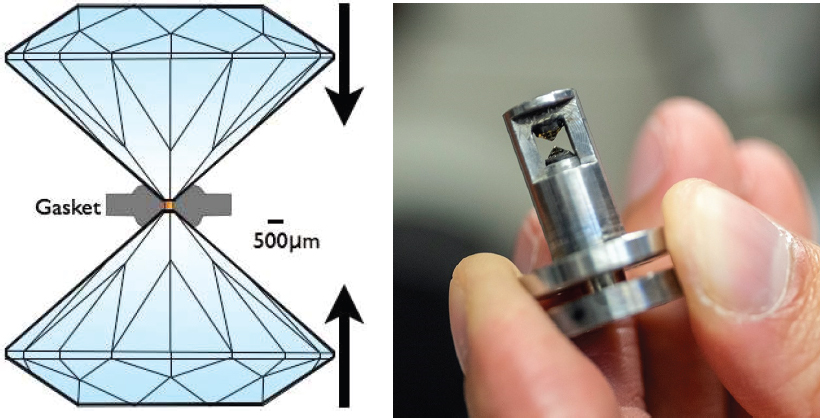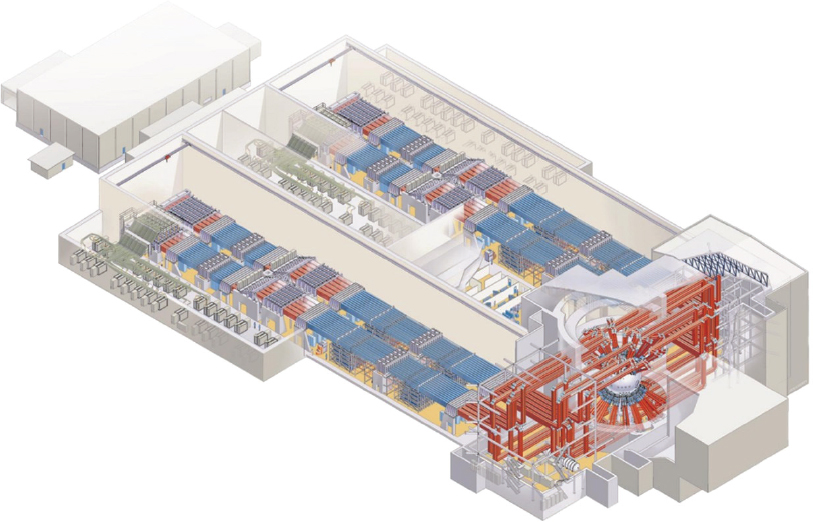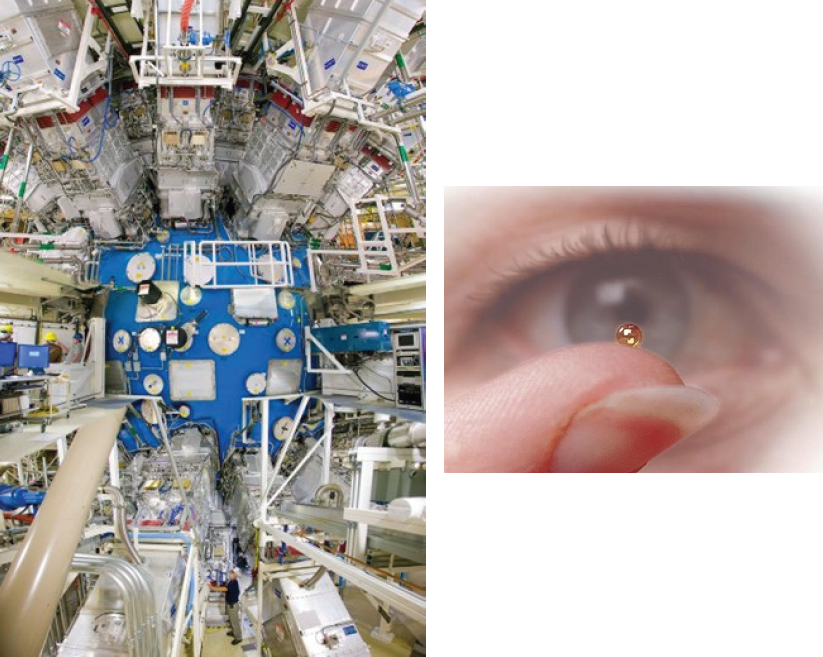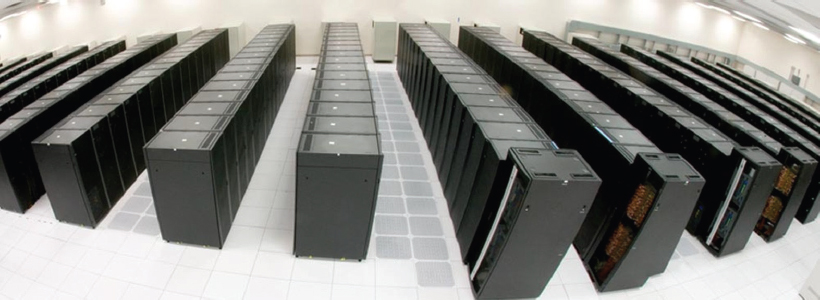B
Tools of High Energy Density Science
This appendix is intended as a brief introduction to the experimental and computational tools of high energy density science, with a summary of capabilities in each case.
EXPERIMENTS
| Static Compression | |
| Diamond-anvil cells (Figure B-1) | to 0.1-1 TPa, 103-104 K (0.1-1 eV) continuous to pulsed heating; compression between points of diamonds, arbitrary duration; density measured to 0.1-1 percent, pressure to 1-10 percent |

SOURCES: (Left) Courtesy of H.P. Scott. (Right) Courtesy of N. Yao, Lawrence Berkeley National Laboratory.
| Dynamic Compression | |
| Gas-guns (Figure B-2) | to 0.1-1 TPa, 104 K (1 eV) range over 0.1-1 µs mechanical impact at up to 1-10 km/s, planar compression shock, multiple-shock, ramp loading; density, pressure measured to 0.1-1 percent |

SOURCES: (Left) Courtesy of Los Alamos National Laboratory. (Right) W.J. Nellis, S. Weir, and A.C. Mitchell, 1999, “Minimum Metallic Conductivity of Fluid Hydrogen at 140 GPa (1.4 Mbar),” Physical Review B 59(5), http://dx.doi.org/10.1103/PhysRevB.59.3434, reprinted with permission. Copyright 1999 by the American Physical Society.
| Pulsed-power (Figure B-3) | to 1-2 TPa, 104-105 K (1-10 eV) range over 0.1-1 µs mechanical impact to 10 km/s, or magnetic compression (planar); shock, multiple-shock, ramp loading; density, pressure measured to 1 percent |
| to PPa, 107-109 K (1-100 keV) range over 10-100 ns magnetic compression (cylindrical shock); density, pressure calculated to 1-10 percent |

SOURCES: (Left) Courtesy of R. Montoya, Sandia National Laboratories, https://www.flickr.com/photos/departmentofenergy/8056998596. (Right) N. Bennett, D.R. Welch, C.A. Jennings, et al., 2019, “Current Transport and Loss Mechanisms in the Z Accelerator,” Physical Review Accelerators and Beams 22:120401. CC BY 4.0.
| Laser (Figures B-4 to B-6) | Dynamic compression to 100 TPa, 107 K range to 100 TPa, 105 K (10 eV) range over 10-50 ns shock, multiple shock or ramp loading (planar); pre-compression; density, pressure measured to 1 percent |
| to 100 TPa, 106 K (10 eV) range over 1-10 ns laser shock or ramp (spherical compression); density, pressure measured to 1-10 percent | |
| to PPa, 107-109 K (1-100 keV) range over 1-10 ns laser shock (spherical); density, pressure calculated to 5-10 percent |

SOURCE: Courtesy of Lawrence Livermore National Laboratory.

SOURCES: Lawrence Livermore National Laboratory, see (left) https://lasers.llnl.gov/about/how-nif-works/target-chamber and (right) https://str.llnl.gov/content/pages/past-issues-pdfs/1999.07.pdf.

SOURCE: B. Bishop, 2018, “First Experimental Evidence for Superionic Ice,” https://www.llnl.gov/news/first-experimental-evidence-superionic-ice. Image by M. Millot/E. Kowaluk/J.Wickboldt/LLNL/ LLE/NIF.
THEORY AND SIMULATIONS
High-performance computers, like those at Los Alamos National Laboratory (see Figure B-7) and in other National Nuclear Security Administration laboratories, enable researchers to carry out a variety of simulations, addressing multiple properties of matter at extreme conditions, including the following:
- Quantum mechanical simulations
- Density Functional Theory (DFT), pseudopotentials at low/warm T
- First Principles Molecular Dynamics (MD) and path integral at warm/high T
- Time-dependent DFT
- Collisional-radiative non-equilibrium kinetics
- Classical molecular dynamics
- Reduced models for turbulence and mix
- Particle-in-cell (PIC)
- Hybrid fluid-PIC
- Maxwell Vlasov Fokker Planck
- Laser-plasma interaction
- Laser wakefield acceleration
- Extended magnetohydrodynamics (MHD)
- Radiation transport
- Hydrodynamic simulations
- Electromagnetic (EM) simulations: optics/radiation/EM-field
- Combined Rad/Hydro/MHD simulations
- Data-driven simulations: artificial intelligence/machine learning

SOURCE: Los Alamos National Laboratory, “Radical Supercomputing,” https://www.lanl.gov/science-innovation/features/radical-supercomputing.php.








